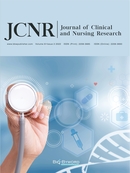Abstract
Objective: Through the real-world electronic medical record information system, the medical records of patients with cervical vertigo were sorted and statistically analyzed to explore the risk factors of patients with cervical vertigo. Method: Retrospective case-control study was adopted. The general status and accompanying symptoms, medical history, auxiliary examination and other medical records of the patients were subject to statistical analysis, and risk factors were determined from logistic regression analysis. Results: The results of imaging examination showed that the risk of vertigo in patients with abnormal cervical physiological curvature was 2.607 times higher than that in patients with normal cervical physiological curvature, and the risk of vertigo in patients with narrowed intervertebral space was 0.431 times higher than that in patients with normal intervertebral space. Conclusion: There were differences in gender, cervical physiological curvature, intervertebral space and other clinical indexes between patients with cervical vertigo and patients without cervical vertigo. Abnormal cervical physiological curvature and narrowing of intervertebral space were significantly correlated with vertigo.
References
Xue S, Wang X, 2000, What is Cervical Vertigo. Chinese Journal of Spine and Spinal Cord, 9(5): 297.
Neurology Branch of Chinese Medical Association, Editorial Committee of Chinese Journal of Neurology, 2010, Expert Consensus on Vertigo Treatment. Chinese Journal of Neurology, 43(5): 369–374.
Peng B, Yang L, 2017, Pathogenesis of Cervical Dizziness. Medical Journal of the Chinese People Armed Police Forces, 28(05): 433–436.
Yang L, Yang C, Pang X, et al., 2016, Mechanoreceptors in Diseased Cervical Discs and Vertigo. Spine, 42(8): 540–546.
